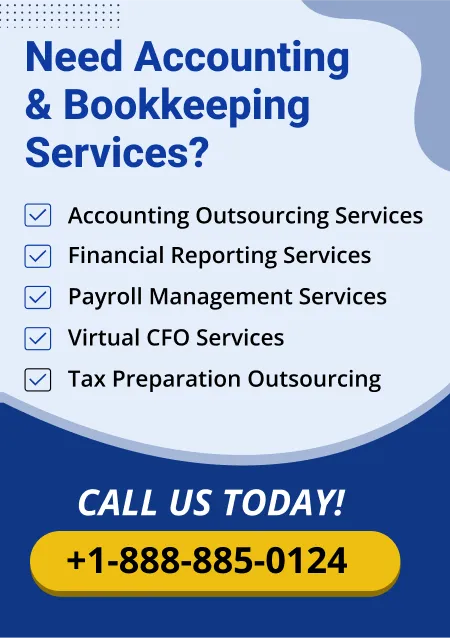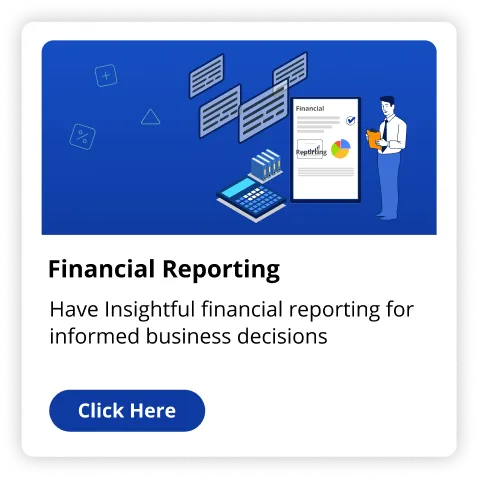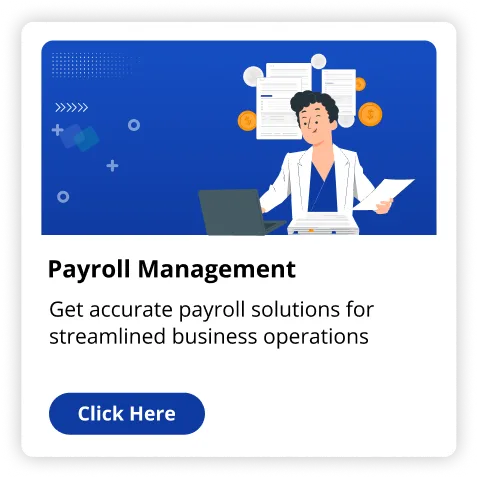If your business specializes in selling goods/services, you must look into the critical sales tax return process. This process involves some crucial steps. It consists in calculating the correct sales tax rate, collecting that tax from customers, etc. It also maintains records of paying your taxes. But, your business must file sales tax returns in different jurisdictions. This is only needed if it operates in multiple states. This article deals with e-filing sales tax returns. It also explores its step-by-step procedures.
Reasons To Accurately File Tax Returns
There are different reasons to file tax returns accurately. It involves:
- Maintaining Trust: Sales tax collection errors will dissatisfy customers and damage your business's reputation, leading to a sharp decline in consumer credibility.
- Streamlined Operations: By reducing the time spent on manual calculations, you can focus on business growth, significantly lowering your administrative burden. This relief from manual calculations can make you feel less burdened and more focused on your business's growth.
- Regulatory Compliance: Stay updated about the changing sales tax rates and regulations to ensure that you're collecting & remitting the correct amounts.
- Avoiding Penalties: eCommerce businesses are under strict scrutiny. Discrepancies in tax collection can trigger an audit that will uncover more significant issues. It involves underreporting of income, failure to pay taxes, etc.
The Complex Sales Tax Return Process
The process of sales tax return filing is complicated as you have to be detail-oriented and keep up with the latest changes in the tax code. However, this detailed guide will outline the steps involved in this process. Read this guide carefully and follow all five steps to efficiently file your tax returns and stay on top of your obligations to the state financially:
Step 1: Gather Your Sales Tax Data
The first step involves gathering sales tax data. It is the data that you need to file tax returns. To accurately file these returns, you must collect the necessary documents by gathering this data:
- Total Sales: The amount you've earned from your sales during the reporting period.
- Sales Tax Collected: How much tax have you collected from customers on taxable sales?
- Exempt Sales: Any sales exempt from sales tax (including resale transactions and certain services) will be included here.
- Returns & Allowances: Any returns or allowances that affect the total sales amount will be included here.
- Location-Based Sales Data: If your business operates in multiple jurisdictions, you should collect data specific to each location’s sales and tax rates.
How Can Fino Partners Help?
If you want to automate sales tax data collection, Fino Partners can help you with this. This desktop app will integrate with major eCommerce platforms seamlessly. So, your business tracks sales and taxes collected in the reported period in real time. With automation, you can reduce all manual entry errors by ensuring that your vital data is immediately available for filing.
Step 2: Understand Tax Filing Deadlines
The second step involves understanding your sales tax filing deadline. Every state has its deadlines when it comes to sales tax return filing. These dates vary based on your sales volume. Missing a deadline can lead to hefty penalties and interest charges; in extreme cases, it can even lead to legal action. For example, you get to submit your tax returns by the 20th of every month in most states. Similarly, others may have quarterly or annual filing schedules based on sales thresholds.
Step 3: Calculate Sales Tax Liability
Then, you must evaluate if your business is eligible for sales tax. This process can look like this:
- Determine Total Taxable Sales: You will calculate the total sales made during the reporting period.
- Apply Appropriate Tax Rates: You must calculate the correct sales tax rates for each jurisdiction where sales occurred.
- Calculate Total Sales Tax: After that, you’ll have to multiply the total taxable sales by the applicable tax rates to determine the total sales tax liability.
How Fino Partners Simplifies Calculation?
Fino Partners calculates your sales tax automatically across multiple jurisdictions. It’s a great way to apply the correct tax rates based on real-time data. Fino Partners eliminates manual tax calculations. These calculations work for different locations and help avoid costly errors.
Step 4: Submit Sales Tax Return
Now, we come to the part where you’ll file your tax returns. It goes like this:
- Complete Required Forms: First, you will access the appropriate forms from your state’s revenue department website.
- Enter Sales Data: The form will be filled with relevant data, including total sales, tax collected, exemptions, and any adjustments.
- Submit Electronically (or by Mail): You can file tax returns electronically or send them to your local revenue department, depending on state regulations.
How do Fino Partners Assist with Filing?
Fino Partners streamlines the filing process by submitting returns on your behalf for multiple states. This feature saves time and reduces the risk of errors that often arise when submitting your returns manually.
Step 5: Make the Tax Payment
After filing your returns, you'll have to pay any taxes owed. It is the final stage of the tax-return-filing process, and it goes something like this:
- Determine Payment Amount: You must ensure the payment matches your calculated liability.
- Choose Payment Method: Payments are usually made via electronic funds transfer (EFT), credit card, or check, depending on state requirements.
- Keep Records: You must keep records of payments made for future reference and compliance checks.
8 Requirements for Filing a Sales Tax Return
Filing your tax return requires gathering different documents and tools for careful reporting. You must follow this detailed checklist of items your business must prepare when filing your tax returns. If there is still any confusion, look into the filing requirements laid down by the official websites to ensure compliance with the latest tax laws.
1. Exemptions and Deductions
- Collect any exemption certificates from customers exempt from paying sales tax.
- If you purchase items for resale, ensure you have resale certificates on file for those transactions.
2. Payment Information
- Have your bank routing and account numbers ready for electronic payments of any taxes owed.
- Evaluate records of any previous payments made to ensure reporting current liabilities accurately.
3. Financial Records
- Prepare profit & loss statements that reflect the total revenue generated during the reporting period.
- Gather reports detailing any expenses that may affect your taxable income.
4. Tax Calculation Tools
- Have access to the latest sales tax rate tables to ensure accurate calculations.
- Use accounting software that integrates with your sales systems to automate calculations and reporting.
5. Business Information
- State-issued sales tax ID
- Business name and address
- Employer Identification Number (EIN)
6. Compliance Tools
- Consider using software like Fino Partners to automate calculations, filing, and compliance updates across multiple jurisdictions
7. Sales Records
- Collect all sales invoices issued during the reporting period
- Gather reports from your POS system that summarize total sales and sales tax collected
- Keep copies of receipts for all transactions, especially for cash sales where invoices weren’t issued
8. Filing Documentation
- Download or access the appropriate sales tax return forms required by your state or local jurisdiction
- Keep copies of previous years’ returns for reference, especially if there are changes in reporting requirements or rates
How Fino Partners Assist You?
Fino Partners plays a significant role in simplifying businesses' sales tax filing process. Instead of doing your calculations manually, you can rely on Fino Partners to calculate your sales tax return/filing. Here are four ways Fino Partners helps you file sales tax returns:
- Streamlines the reporting/filing process, saving you hours each month that would be spent otherwise on manual calculations and paperwork. This emphasis on the time saved by automation can make business owners feel more efficient.
- Integrates easily with eCommerce systems to streamline sales tax return processes in the US.
- Ensures compliance with evolving taxation regulations by updating tax rates, primarily if your business operates in many states.
- Automates the calculation of sales tax based on real-time data taken from more than 13,000 jurisdictions across America.
Are you interested in learning how to file a sales tax return? This article will help you stay on top of your taxation obligations. The support available can make you confident in managing your tax obligations.
Closing Remarks
In short, the process of filing sales tax returns can be automated with Fino Partners. You can simplify this process by generating return-ready reports. It'll save time and ensure your business meets all due dates and regulatory requirements. After all, you can avoid non-compliance penalties by filing your returns early.
With Fino Partners, you can easily manage your sales tax processes within your existing system as this platform integrates seamlessly with eCommerce sites, such as Odoo, Shopify, Big Commerce, etc. Dedicated customer support makes it an ideal sales tax compliance management software.
Ready to simplify your sales tax filing process? Start your experience with Fino Partners today!


























